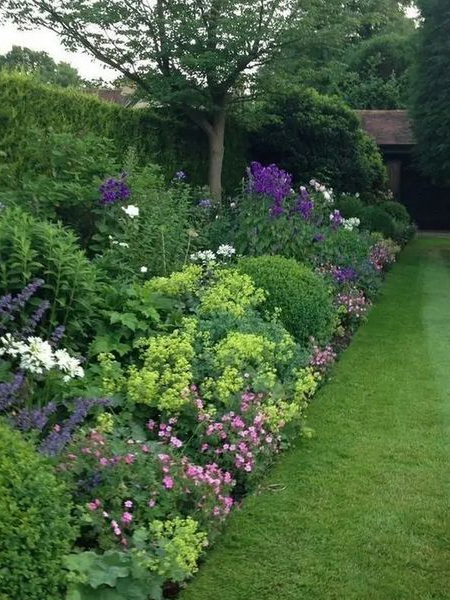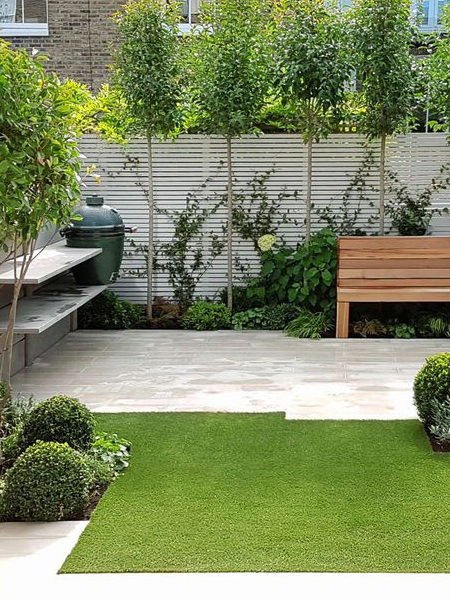Now is the Best Time to Right the Wrongs in a Garden
Establishing a garden is no easy feat and there are plenty of ways even good planning can go wrong, so here are a few suggestions to right the wrongs in your garden.
24/04/2022
I love gardening and spending time in the garden and today it was time to start cleaning things up as we move into colder weather and start planning for any changes that I want to the garden. That's the thing about many gardens, they evolve over time. You start out with small plants and shrubs and possibly a few medium-sized trees to get the garden started and then wait for everything to grow.
The only problem when establishing a small or medium garden is that you don't know how things will grow and how much space they will take up when they do grow. That is why it is important to prune and time plants, so that you can help them realise their potential growth and ensure they don't take over. And that's what this article is about, looking at the beds and borders, any large shrubs, or trees that you have as well as the lawn.
1. Tame Beds and Borders
More often than not, a smallish garden will have one or two flower beds or borders around the perimetre. These are placed around the edge of the garden to provide interest and colour and will possibly also include a few larger shrubs or small trees to eventually provide privacy for the garden.
It is commonly known that you plant taller varieties at the back of the beds and low-growing plants at the front. But this isn't always how nature works and you can easily end up with a mess with overgrowing plants that smother the beds and a mess of heights with absolutely no organisation. The main fault here is just letting everything grow until it takes over and now is the best time to sort it out so that it will be ready when spring comes around.
Below is the perfect example of how NOT to plant flower beds. The Duranta Gold in the middle will soon grow into a bush four times the sized it is now and will dominate the narrow flower bed.
When planting flower beds it is not about the height of the plant when you plant them but about their potential growth height. Tallest at the back and lowest growing at the front.
• Weed out the main culprits
Assess the plants that are in the beds so that you can determine the main culprits. Plants that have grown too high towards the front of the beds need to be replanted at the back. Plants that are intruding over the lawn or spreading in all directions need to be tamed by trimming and pruning until they occupy only the space for which they were intended. Don't worry about blank space at this stage, as it won't be long before the plants start to grow back - and this time you need to keep the secateurs handy to trim back any excess growth.
When left unattended to, flower beds can quickly become a mess of overgrown plants and weeds. Leave plenty of space between plants for them to reach the full growth potential and create a beautiful display.
• Divider and conquer
Another task that is best done now is to divide up plants that have established themselves and need more room. Plants such as Agapanthus, grasses, lily species and other plants with bulbous roots need to be thinned out as soon as they start to become too bit. Not only will the main plant continue to grow and thrive, but you will also have new plants to populate the garden. If you are not sure how to divide and separate plants, there are plenty of online videos that offer advice on all types of plants.
To ensure plants continue to thrive, particularly plants with bulbous roots, they need to be divided up and re-planted when the clumps become too large.
• Ready the beds for spring planting
Now that the summer is done, it is also time to clean out the beds of last summer's annuals or any perennials that are past their prime. Once these are removed, you should add organic fertiliser to the soil so that it is enriched for spring and summer planting, especially if you like to plant bulbs late winter or early spring.
In a small or medium-sized garden it is essential to keep trees and larger shrubs trimmed for them to be easily managed. If they grow too high, it becomes difficult to control their growth and prevent them from overpowering the garden.
2. Trim Trees and Shrubs
If you are a wise gardener, you would have purchased and planted shrubs and trees that were appropriate for the size of the garden. I did that, but still ended up with shrubs and trees that have grown out of proportion, despite the garden centre telling me their potential height growth.
• Don't let trees become uncontrollable
I have a New Zealand Umbrella Tree (schlefflera) and shown above that started off as a house plant and now dominates one side of the garden. Who knew! I also have a Ficus Benjamina that was a house plant and is now taller than my double-storey house! Must have miracle fertliser in the soil! The point is, sometimes how plants grow is out of your hands and if you don't stay on top of it, it isn't long before it becomes a problem.
Regular trimming and shaping of trees in a garden will ensure healthy growth throughout their lifespan.
• Trim for shape and size
The main problem when planting shrubs and trees is that they get overlooked and don't receive enough maintenance for them to keep their shape or grow too high. The only way to overcome this and prevent large shrubs and small trees from becoming a problem is to regularly trim and prune. A good pruning can be done during the coldest time of winter, as this prevents the shrubs or trees from infection. But now is a good time to trim lower down where shoots have started to occur and to remove these as well as branches that are spreading out too far. If the shrubs or trees are growing too tall, it is a good time to trim these before they reach a height where trimming becomes difficult.
Trees left to grow too tall will mean that you will only be able to trim the lower branches and will need to hire a tree trimmer to cut them lower, which is not an inexpensive exercise, plus these guys tend to make a mess of a garden. Do it before they get too tall, and you will be able to keep on top of this moving forward.
3. Neaten unruly lawn
With most of the lawn planted being Kikuyu, by now you will know how this stuff grows like a weed. One it starts sending out shoots around the edge of the lawn, you know it won't be long before it takes hold and spreads all over. If you are handy with an edge trimmer or weed eater, you already know that you need to trim regularly but there are other ways to keep a Kikuyu lawn under control.
• Edge lawn and borders
Installing an edge around border and lawn means less work for you to keep the area neat and tidy. Plus, there are many lawnmowers on the market these days that cut right up to the edge. But even using an edge trimmer will be easy is the edge is defined.
• Fix bald patches and spotty lawn
When the grass goes into hibernation for the winter is the best time to get stuck into fixing any problems that includes bald spots, weeds that have taken over, or where the grass has become sparse perhaps due to too much shade. A quick trip to your garden centre will kit you out with everything you need to fill bald spots or sparse growth, either with seed or turf. Dips and divots can easily be sorted by placing a layer of rich soil on these areas that will eventually be filled with new growth by the time spring comes around.














